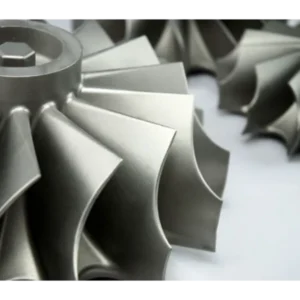Lost Foam Casting:An Overview
What is Lost Foam Casting?
Lost-foam casting is a highly precise and innovative casting process where a foam pattern is used to create a mold. The foam pattern is coated with a refractory material and then packed in sand. When molten metal is poured into the mold, the foam evaporates, leaving behind a detailed and accurate metal casting. This process is ideal for producing complex and intricate parts with high dimensional accuracy.
How Does the Lost Foam Casting Process Work?
The lost foam casting process involves several key steps:
Pattern Creation: A foam pattern is made, replicating the desired final product.
Coating: The foam pattern is coated with a refractory material to create a ceramic shell.
Molding: The coated foam pattern is placed in a flask and packed with unbonded sand.
Pouring: Molten metal is poured into the mold, causing the foam to vaporize and the metal to fill the void left by the foam.
Cooling and Solidification: The metal cools and solidifies in the shape of the original foam pattern.
Shakeout: The sand is removed, revealing the metal casting.
Finishing: Any necessary machining and surface treatments are applied to achieve the desired specifications.
What Types of Materials Can Be Used in Lost Foam Casting?
Lost foam casting can utilize a wide variety of materials, including:
Steel and Stainless Steel: For high-strength and corrosion-resistant parts.
Aluminum Alloys: Lightweight and excellent for heat dissipation.
Cast Iron: Durable and wear-resistant components.
Copper Alloys: Superior electrical and thermal conductivity.
Nickel Alloys: High temperature and corrosion resistance.
What Are the Size Limitations in Lost Foam Casting?
Lost foam casting can produce a wide range of part sizes, from small intricate components to large, heavy-duty parts. The size limitations are primarily determined by the capabilities of the casting facility and the complexity of the part.
What is the Range of Surface Coatings for Lost Foam Cast Parts?
Lost foam cast parts can be finished with various surface coatings to enhance their properties:
Electroplating: Improves corrosion resistance and surface appearance.
Anodizing: Particularly for aluminum parts, enhancing corrosion resistance and surface hardness.
Powder Coating: Provides a durable and decorative finish.
Painting: Adds color and additional protection.
What Are the Dimensions Accuracy and Roughness in Lost Foam Casting?
Lost foam casting offers high dimensional accuracy and fine surface finishes:
Dimensional Accuracy: Typically within ±0.005 inches (±0.127 mm) per inch.
Surface Roughness: Achievable surface finishes range from 125 to 250 microinches Ra (3.2 to 6.3 µm).
What Are the Quality Measuring Methods for Lost Foam Cast Parts?
Ensuring the quality of lost foam cast parts involves several inspection methods:
Dimensional Inspection: Using precision measuring tools and coordinate measuring machines (CMM).
Non-Destructive Testing (NDT): Techniques such as X-ray, ultrasonic testing, and dye penetrant inspection to detect internal and surface defects.
Material Testing: Chemical and mechanical testing to verify material properties.
Visual Inspection: Checking for surface defects and overall appearance.
What Are the Tool Costs for Lost Foam Casting?
Tooling costs for lost foam casting can vary:
Pattern Creation: The initial creation of the foam pattern molds can be expensive but is offset by the ability to produce multiple parts.
Coating and Molding Equipment: Investment in equipment for coating and packing the foam patterns with sand.
Overall Cost: While initial tooling can be high, the cost per part decreases with higher production volumes.
What Are the Benefits of Lost Foam Casting?
Lost foam casting offers numerous advantages:
High Precision: Excellent dimensional accuracy and intricate detail.
Versatility: Wide range of materials and complex geometries.
Reduced Waste: Efficient use of materials, leading to minimal waste.
Cost-Effective: Economical for both small and large production runs.
What Are the Applications of Lost Foam Casting?
Lost foam casting is used in various industries, including:
Automotive: Engine components, transmission parts, and structural elements.
Aerospace: Turbine blades and complex structural parts.
Industrial: Machinery parts and tools.
Art and Sculpture: Detailed and custom designs.
Pumps and Valves: Intricate and precise components.
What Should Be Considered When Choosing Lost Foam Casting?
Considerations when choosing lost foam casting include:
Part Complexity: Ideal for intricate and complex designs.
Material Requirements: Ensure the material used meets the application’s demands.
Production Volume: Higher volumes can offset initial tooling costs.
Lead Time: The process involves multiple steps, which can affect lead time.
How Does Lost Foam Casting Compare with Other Processing Methods?
Lost foam casting vs. other methods:
Investment Casting: Lost foam casting offers comparable precision and is more cost-effective for large parts.
Sand Casting: Lost foam casting provides better surface finishes and dimensional accuracy.
Die Casting: Lost foam casting is suitable for larger, heavier parts, while die casting is ideal for high-volume, intricate parts.
Why Choose Welleshaft for Your Lost Foam Casting Needs?
Choosing Welleshaft for lost foam casting provides several benefits:
Expertise: Extensive experience and knowledge in precision lost foam casting.
Quality Assurance: Rigorous quality control measures ensure high standards.
Customization: Ability to produce custom parts to meet specific requirements.
Advanced Technology: Utilization of modern techniques and equipment for superior results.
Customer Service: Dedicated support throughout the entire process, from design to delivery.
By understanding the intricacies and advantages of lost foam casting, you can make informed decisions for your manufacturing needs, ensuring the best quality and performance for your products.










Reviews
There are no reviews yet.